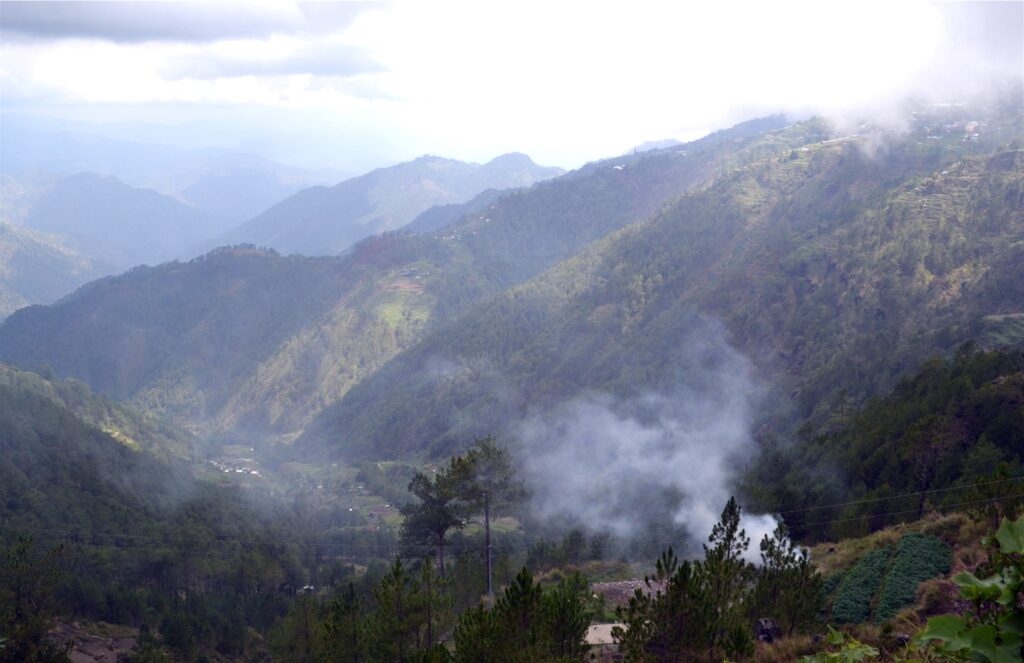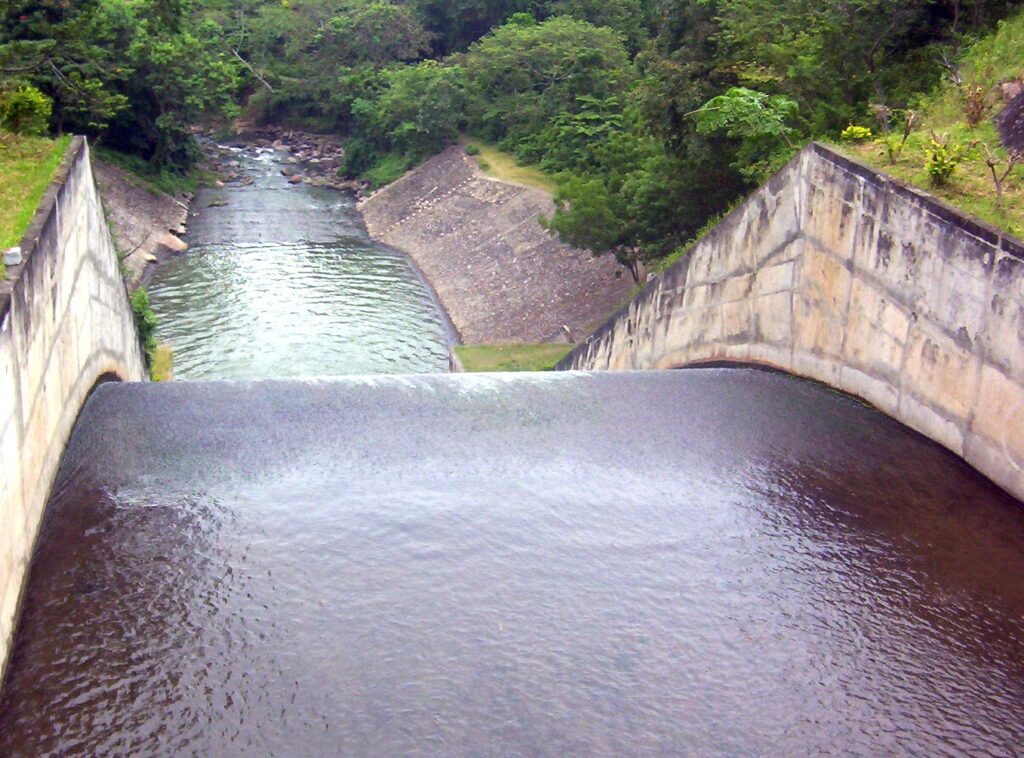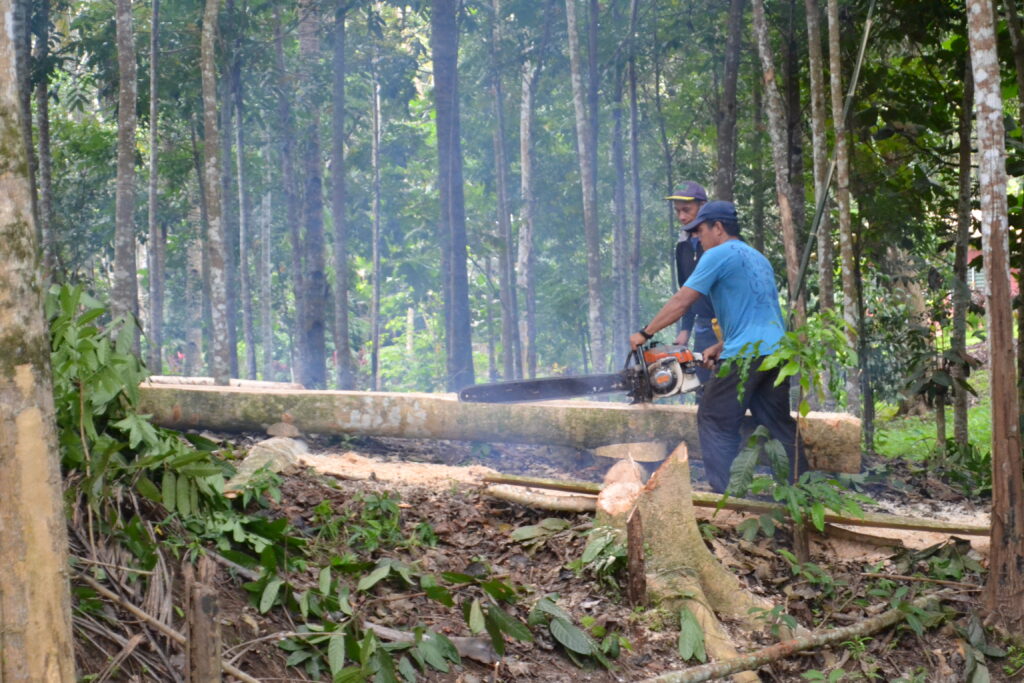Text and Photos by Henrylito D. Tacio
What has been lost can never be restored, but what remains can still be saved, managed, and enhanced. Such is the case of watershed, defined as an area of land that drains all the streams and rainfall to a common outlet.
“A watershed is a watershed is a watershed,” said the late Paz L. Lopez when she was the head of the Department of Environment and Natural Resources (DENR).
Most of the country’s watersheds are located in uplands where forests used to abound. These uplands – which constitute at least 60% of the country’s total land area of 30 million hectares – are now devoid of forest cover. “Where have all our forests gone?” asked environmentalists.
“A watershed needs trees in order to absorb rainwater when it channels into streams, rivers and eventually dams where human communities source fresh water,” Rappler’s Pia Ranada wrote.
“A typical tree breathes out 250 to 400 gallons of water per day through its leaves, humidifying the air,” Ranada explained. “This process, called evapotranspiration, is responsible for most of the rain that falls inland, far from oceans. Thus, without trees, there is no rain and it is rain that supplies much of the freshwater humans need to live.”
Dr. Patrick Durst, former regional forestry officer of the UN Food and Agriculture Organization (FAO), said the main benefit trees provide is helping to intercept precipitation and facilitate its infiltration into the soil and ground water storage areas.

Kaingin farming 
Damming water
The tree also helps reduce erosion of soil by “breaking the fall” (that is, the impact) of rainfall that might otherwise dislodge soil particles upon harsh impact, Durst added.
“Trees, through their leaves and branches, intercept rainfall,” the former FAO official explained. “But more importantly, healthy forests’ ground cover – organic litter, twigs, small plants and fallen leaves, among others – help trap water and hold it until it has an opportunity to soak into the ground soil.”
In addition, roots – whether alive or decaying – provide additional pore space above that of normal soil texture for water to infiltrate into the ground. “This is the reason why local springs and streams maintain a healthy flow when surrounded by protected micro-watersheds,” Durst pointed out.
Father Pedro Walpole of the Environment Science for Social Change, Inc., said that in a watershed, there is the interrelation of many resources. “There are (also) ecological services that a watershed provides such as delivery of water as part of the water cycle, stable land-water dynamics, nutrient cycles, a diversity of life forms,” he explained.
As such, “watershed management is not just a matter of managing water but of managing the land that delivers the water and coordinating the people in that management,” Fr. Walpole urged.
Not all watersheds in the country are in pristine status, the Department of Science and Technology (DOST) discloses. “Some are already affected by deforestation, pollution, and other unsustainable practices of humans, who are oblivious of the potential adverse effects,” it admits. “Climate change, ballooning population, and industrialization exacerbated the hazards to the sustainability of watersheds.”
For these reasons, an executive order (EO) prioritizing watershed rescue is being pushed for urgent passage by forest experts in order to counter the effects of climate-linked calamities and ensure replenishment of irrigation and hydroelectric or geothermal energy sources.
The Forest Management Bureau (FMB), a line agency of the DENR, is currently drafting an EO that will elevate to national strategy status its “Save Our Watershed” (SOW) movement, according to a press release.
“This will pave the way for the establishment of institutional mechanisms for collaborative or whole-of-society efforts in conserving our watersheds,” said Environment Secretary Roy A. Cimatu at a launch of the SOW campaign recently.
According to Energy Development Corp. (EDC) Assistant Vice President Allan Barcena, it is extremely important for watersheds – which he described as “forests that are sources of water that are ‘shed’ into rivers, lakes, and seas – to be protected.

“Protecting watersheds is not only a corporate social responsibility program for us. It is part of our business strategy. When we’re protecting the watershed, it means our geothermal resource is sustained. If we don’t protect our watershed, our geothermal steam is not sustained. So for us it’s both a commitment and a business strategy and mission.”
Most of the country’s geothermal plants are located in forested areas. The EDC runs 12 geothermal-powered power plants in Leyte, Bicol, Southern Negros, and North Cotabato with an installed capacity of 1,179 megawatts.
The press release said FMB Director Marcial is expecting the EO to be filed with Malacanang before the end of the year. The DENR’s Forestland Management Project (FMP) is supporting the SOW campaign.
The FMP is being co-financed by the Japan International Cooperation Agency, a governmental agency that delivers bulk of official development assistance for Japan.
JICA chief Eigo Azukizawa said the SOW campaign hopes to avert the destructive effects of calamities. The Typhoon Ulysses in November last year, he said, affected three million people in Cagayan Valley who suffered from flooding.
“To see people on top of their houses submerged in flood is heart-breaking,” he deplored.
The SOW-FMP has targeted to protect 71,300 hectares of forests within the critical watershed areas of Upper Magat and Cagayan, Upper Pampanga, and Jalaur (in Panay Island).
Based on the 2019 data, the Philippines has 131 critical priority watersheds that support water facilities, hydroelectric power plants, and irrigation systems.
For instance, the Cagayan River Basin – home to the country’s largest river with a drainage area of 27,280 square kilometers at its mouth in Aparri – irrigates around 300,000 hectares of rice fields.
The Jalaur River Basin in Iloilo, with an area of 1,503 square kilometers, can supply 90,611 million cubic meters of water. The river is Panay’s second-largest by drainage basin – after Panay River.
“Every day we use water in our homes for drinking, washing, and watering our plants. We ensure the constant supply of water to our homes by taking part in saving the watersheds,” states the SaveOurWatershedPH.
The Magat Hydroelectric Power Plant, one of the largest hydro facilities in Luzon, which was constructed in the 1980s under the Magat River Multi-Purpose Project, produces a maximum output of 388 megawatts and draws water from the Magat River (whose basin size is 1,970 square kilometers and discharges 9,808 million cubic meters of water annually).
“The water that runs through Magat River comes from the Magat Watershed located in Ifugao, Isabela, and Nueva Vizcaya. This means part of the electricity that powers our homes comes from water. When water becomes scarce, the electricity generated is less and can cause power outages in Luzon,” the environment department said.
“The Philippines has a lot of hydropower potential, but it is up to us to harness this potential,” DENR said. According to the Department of Energy, the total untapped hydropower resource potential of the country is estimated at 13,097 megawatts, of which 85% are considered large and small hydros.
But the country’s watersheds are beset with problems. Most rivers are now silted with soil as a result of erosion from the uplands. The Washington-based Worldwatch Institute considers soil erosion as “a silent crisis.”
Rev. Harold R. Watson, who received the Ramon Magsaysay Award for international understanding in 1985, said, “(Soil erosion) is a slow creeping enemy that soon possesses the land.”
While some sceptics believe climate change is a hoax, soil erosion is a reality. “Land is not being remade,” said Watson, who once served as the director of the Davao-based Mindanao Baptist Rural Life Center (MBRLC). “Soil is made by God and put here for man to use, not for one generation but forever. It takes thousands of years to build one-inch of topsoil but only one good strong rain to remove one inch from unprotected soil on the slopes of mountains.”
The problem is getting nastier. “Soil loss is when the top layer of fertile soil is removed and goes to rivers and other places,” the environment department explained. “It results in loss of nutrients for the trees.
“Another serious consequence of continued soil loss is landslides. Trees and other plants are important in conserving soil and water resources. These help hold the fertile top layer of soil to prevent landslides and flooding,” the DENR added.
Based on studies, 24 sub-watersheds covered by Upper Magat-Cagayan, Upper Pampanga, and Jalaur River Basins lose around 1 million tons of soil, amounting to P140 million per year.
Siltation and sedimentation have been caused by deforestation in the uplands. When Watson came to the Philippines in the 1960s, he was already sounding the alarm of deforestation and soil erosion. But people only laughed at him. They told him, “We’re never going to run out of trees!”
They were completely wrong. A DENR study indicated a total of 14.375 million hectares of forestland in the county remains as of 2015, but these only have a forest cover of 18%.
Priority watersheds include 3.004 million hectares in Region 3; 1.76 million hectares in Region 11; 1.637 million hectares in Region 2; and 1.573 million hectares in the Cordillera Administrative Region.
It’s no wonder why soil erosion is now one of the country’s environmental problems. “Soil erosion is considered as one of the worst problems of most watersheds in the country, with estimates of between 74 and 81 million tons of soil being lost annually. Between 63% and 77% of the country’s total land area are affected,” the DENR study highlighted.
“Thirteen of the country’s 73 provinces have over half of their land area affected by moderate to severe erosion. Sedimentation has reduced the storage capacity of the country’s major reservoirs affecting water supplies for domestic, industrial, irrigation, and power generation,” the study added.
Ironically, the same people who need water for their many purposes contribute largely to watershed destruction. In 2000, some 20 million Filipinos – about 26% of the national population – lived in the uplands.
“The population that relies on the goods and services watersheds provide steadily grows, creating more pressure for the already overburdened natural resources in the watersheds,” the DENR said.

